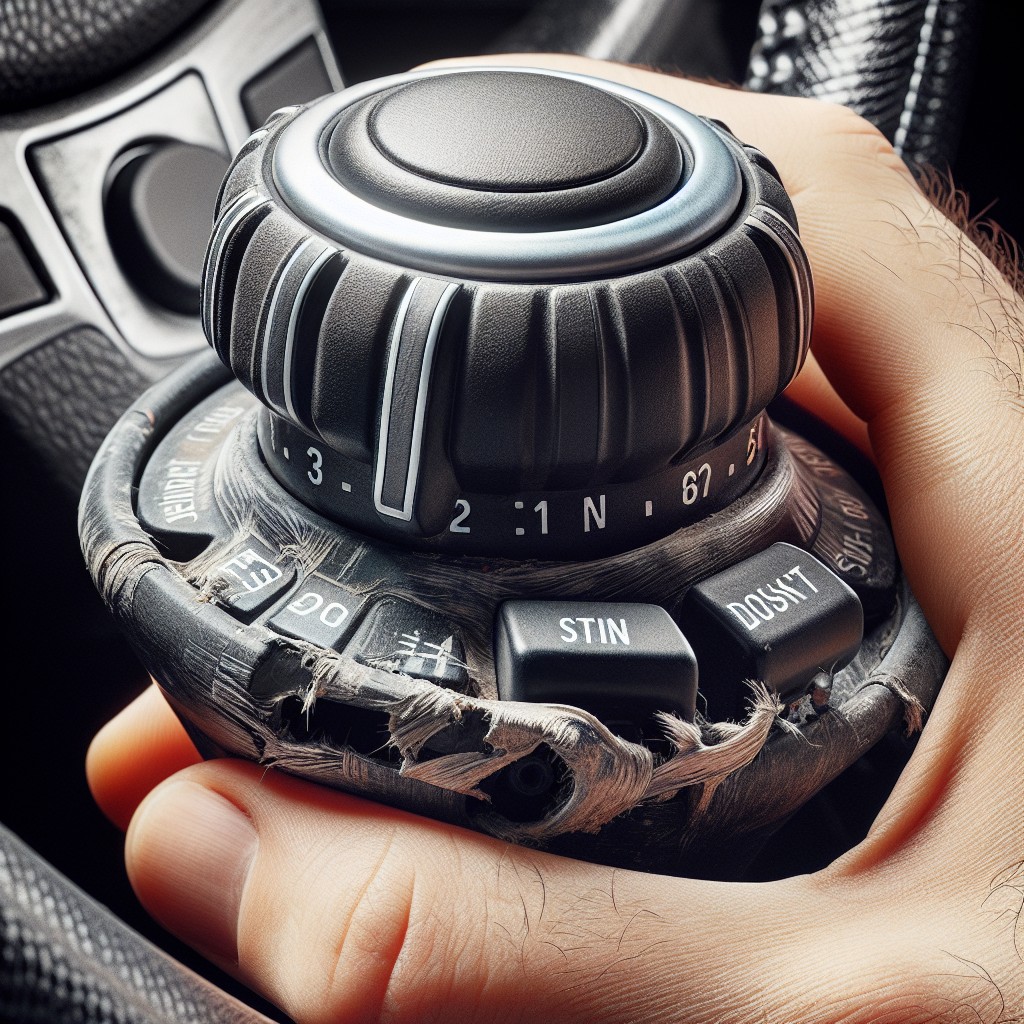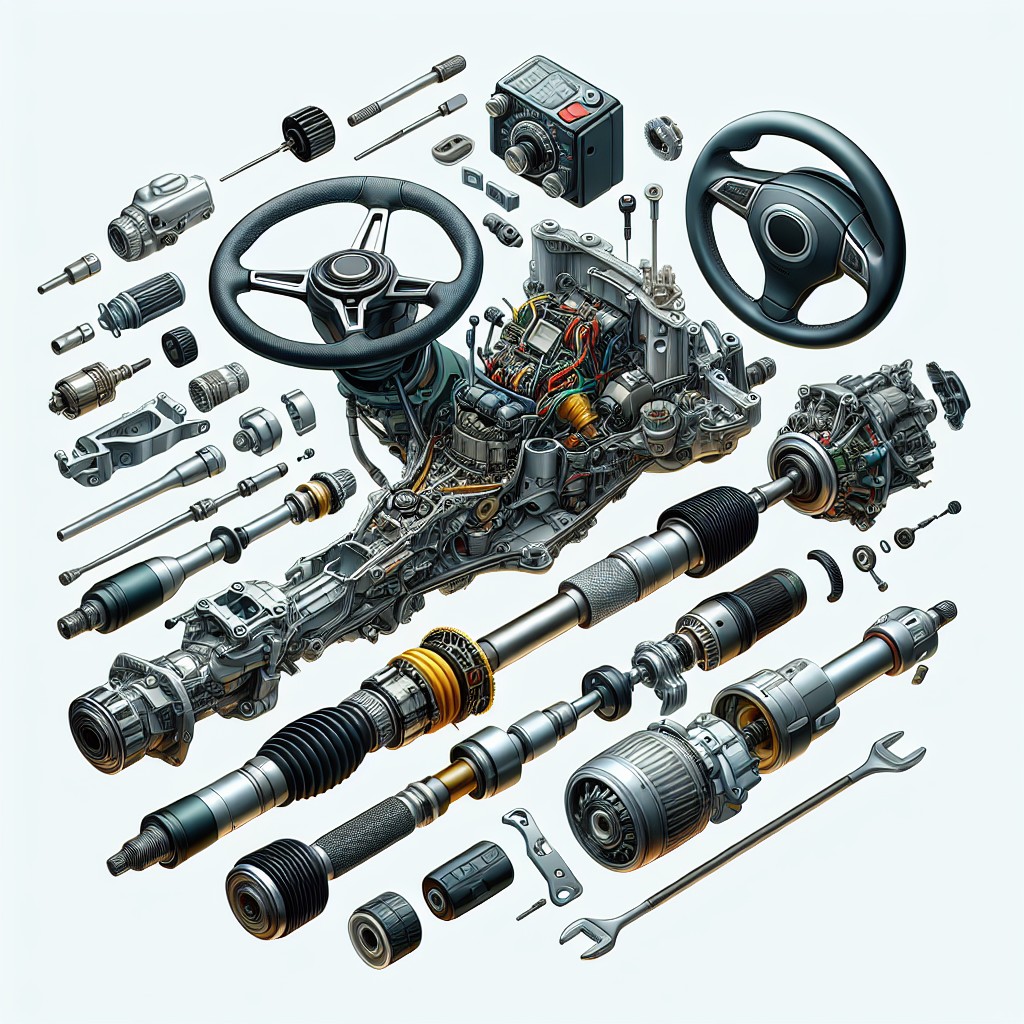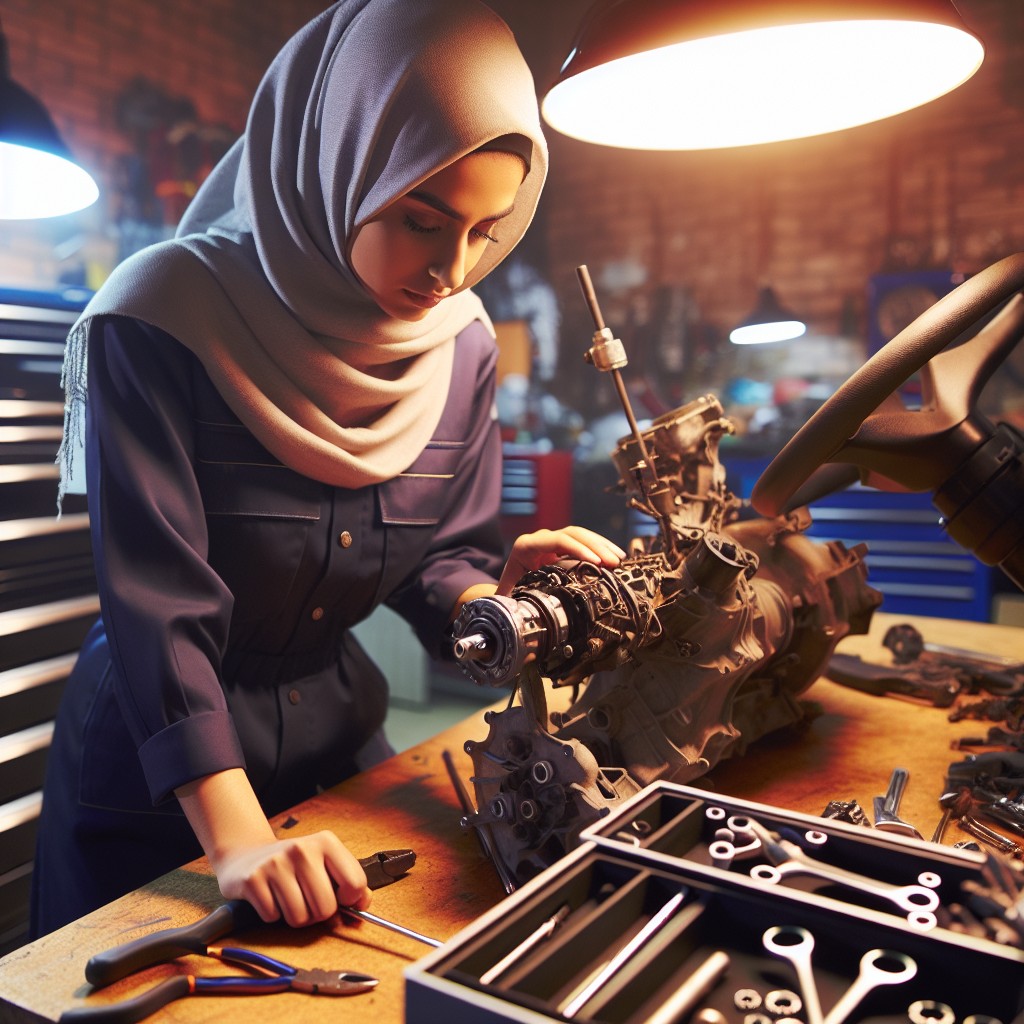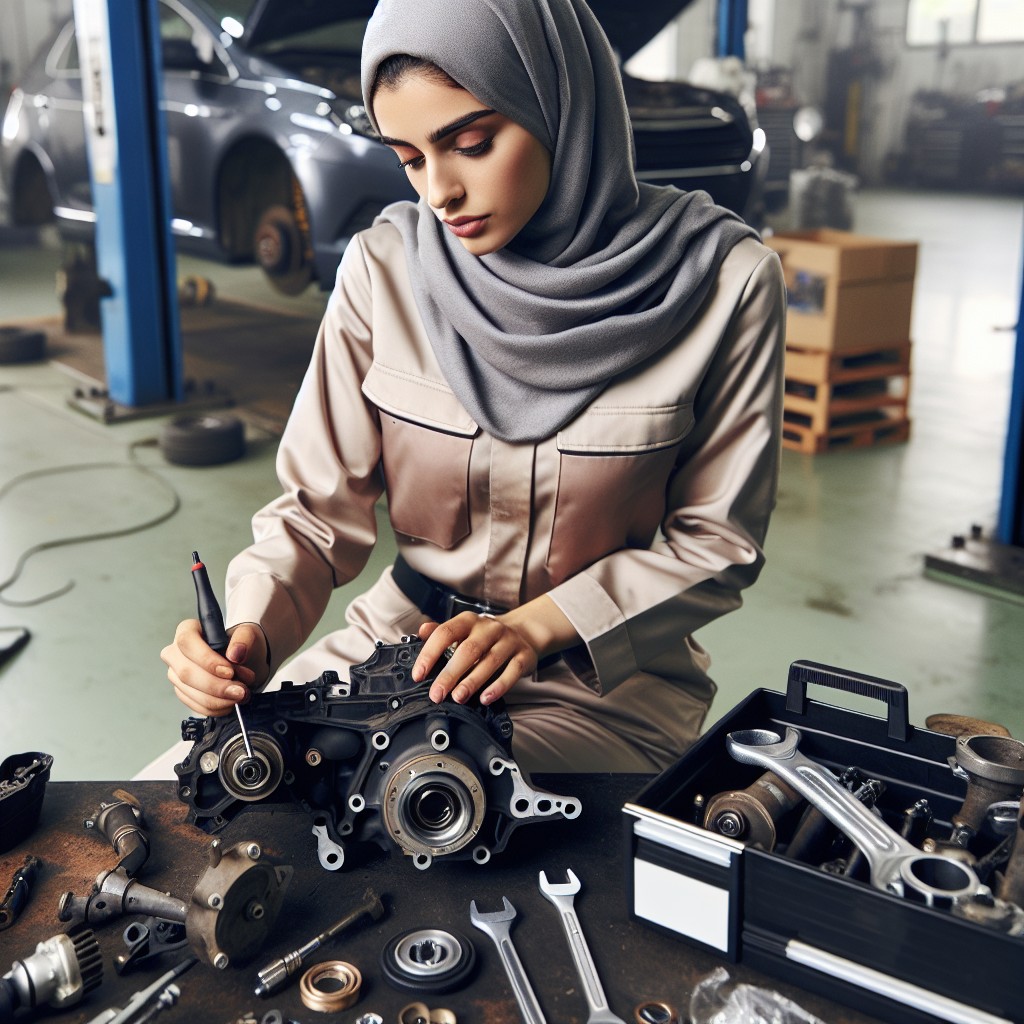Last updated on
Delving into the world of steering column repair can feel daunting, but with this comprehensive, step-by-step guide, unraveling the nuances of this seemingly complex task becomes possible because even the most technical challenges often have a manageable solution when approached with the right knowledge and tools.
Key takeaways:
- Unusual noises or difficulty steering may indicate steering column problems.
- Steering column parts include the steering wheel, shaft, gear box, and electrical components.
- Common signs of steering column issues include clicking noises and ignition switch difficulties.
- Repairing a steering column involves disconnecting the battery, removing panels, and replacing the damaged column.
- Having the right tools and considering factors like cost and damage extent are important when deciding to rebuild or replace a steering column.
Table of Contents
Common Symptoms of Steering Column Problems

If you notice unusual noises like clunking or clicking when turning the wheel, it’s a red flag that there may be an issue with the steering column. Difficulty in steering or the steering wheel feeling looser or tighter than normal can indicate wear or damage to internal components.
Additionally, if the steering wheel is misaligned or does not return to the center smoothly after making a turn, it could also point to problems within the column. Another tell-tale sign includes the tilt function becoming stiff or failing to lock, compromising the steering position and safety.
Ignition switch difficulties, such as the key not turning or the engine not starting, may also stem from steering column defects, as the ignition system is often integrated with the column in many vehicles. Paying attention to these symptoms can help catch and address steering column problems before they escalate.
Essential Steering Column Parts

The intricate assembly responsible for vehicle steering comprises several key components. The steering wheel is the most visible part; it receives the driver’s input and is connected to the steering shaft, a rod that transmits the input down the column. The universal joints allow for flexibility and angle changes in the shaft’s motion, adapting to bumps and vehicle contours.
At the base of the shaft, a steering gear box or rack and pinion system converts the rotational motion into lateral movement, enabling the wheels to turn. The ignition switch, integral to starting the vehicle, is often located on the column, and for security, a locking mechanism prevents wheel movement when the key is removed.
Electrical components within the column include turn signal stalks, cruise control, and wiper functions, with wiring harnesses ensuring connectivity. Bearings and bushings ensure smooth rotation and minimize wear and tear, while the steering column’s coupling to the vehicle frame is cushioned by a collapsible design for safety during impacts. Understanding these parts’ roles is essential for pinpointing problems and conducting precise repairs.
Diagnosis of Steering Column Issues

Identifying the root cause of steering column problems can prevent costly repairs. Listen for unusual noises such as clicking or grinding when turning the wheel, which can indicate worn bearings or a damaged gear coupling.
A tilt mechanism that fails to lock correctly suggests a malfunction within the tilt-steering column. Notice if the steering wheel has excessive play or is unusually stiff, as these symptoms could point to issues with internal components or a need for lubrication.
Electrical problems may manifest through malfunctioning horn, cruise control, or airbag lights. Lastly, any difficulties in turning the ignition key could be linked to a faulty ignition switch, a common steering column ailment.
Recognizing these signs early can lead to a more effective diagnosis.
Step-by-Step Repair Instructions

Begin by disconnecting the battery to eliminate the risk of electrical shock. Lower the steering wheel to its lowest position, providing sufficient workspace.
Remove the screws from the under-dash panels to access the steering column. Take care to keep all fasteners and panels organized for reassembly.
Unlock the steering column by removing the bolts or screws that secure it. Note that in some models, you may also need to disconnect the ignition switch and airbag to proceed safely.
Carefully disconnect any electrical connections to the steering wheel, including those to the airbag and horn. This may require gently releasing clips or tabs that hold the wiring in place.
Slide out the damaged steering column, taking care not to disturb other components under the dash.
Replace with the new or rebuilt steering column by reversing the disassembly process. Ensure all bolted connections are tight and that wiring harnesses are correctly connected.
Finally, reconnect the battery and test the installation for proper alignment and functionality before replacing the under-dash panels.
Throughout the repair, handle parts with care, especially when dealing with airbag components and wiring to avoid triggering fault codes or damaging sensitive electronic components.
Tools Required for Steering Column Repair
Equipping yourself with the right set of tools is critical before diving into steering column repair. To get started:
– Screwdrivers of various sizes are essential for removing and securing fasteners within the steering column. – A socket set is imperative for bolts and nuts, with an extension bar to reach deep-set screws. – Torx drivers may be necessary, as many vehicles use Torx screws in the steering assembly. – A steering wheel puller is vital for safely removing the steering wheel without causing damage. – Snap ring pliers will help remove and install the snap rings found in many steering columns. – A hammer and a punch set facilitate the removal of pins and retainers. – Lock plate tools assist in compressing and removing the lock plate in the column. – Penetrating oil can aid in loosening rusty or stuck components, ensuring smooth disassembly.Remember, the right tools not only streamline the process but also prevent potential damage to your vehicle’s components.
Rebuilding Vs. Replacing a Steering Column
Deciding whether to rebuild or replace a steering column is influenced by factors such as cost, availability of parts, and the extent of the damage.
- Rebuilding a steering column can be a cost-effective option when specific components such as bearings, bushings, or switches are worn out but the core structure remains sound.
- Replacing the steering column is generally recommended if the unit has sustained irreparable damage, such as a bent shaft, or if the electrical components are extensively compromised.
- In the case of vintage or rare vehicles, where replacement parts may be scarce or prohibitively expensive, rebuilding is often the preferred choice.
- For modern cars with intricate electronics and security features like steering wheel locks and airbag systems, replacement might be the only option to ensure safety and functionality.
- Labor costs should be considered since rebuilding can be more labor-intensive whereas replacement often offers a quicker turnaround.
- Always consult with an experienced technician to weigh the pros and cons specific to your vehicle’s make and model and to comply with safety standards.
Importance of Professional Steering Column Repair Services
Seeking the expertise of a professional for steering column repairs ensures safety and precision.
The steering column is a complex system with critical components like airbags and steering wheel controls that require careful handling.
Technicians are equipped with specialized tools and diagnostic software to accurately pinpoint issues and perform repairs with expertise that extends to coding necessary for electronic components.
Moreover, professionals offer warranties on their work, providing peace of mind alongside compliance with industry-standard safety regulations.
Incorrect repairs can lead to further damage or compromise driver control, highlighting the importance of professional intervention.
How to Access Free Repair Information and Instructions
Accessing free repair information can streamline the process of fixing your steering column. Consider these resources:
- Online Automotive Forums: Enthusiast communities often share detailed guides and personal experiences with steering column repairs. Search for threads related to your specific vehicle model.
- DIY Auto Repair Websites: These websites commonly host a wealth of repair instructions, including user-contributed manuals and step-by-step guides, which may offer insights into your steering column issue.
- Video Tutorials: Platforms like YouTube have countless video tutorials uploaded by both professionals and amateurs showing how to diagnose and repair steering column problems.
- Manufacturer Websites: Some automakers provide free access to their service manuals or parts diagrams, which can be invaluable for understanding the steering column assembly.
- Public Libraries: Many libraries offer free access to comprehensive databases like Chilton or Haynes manuals, which include detailed repair instructions.
- Recall Information: Check for recalls related to your vehicle’s steering column, as manufacturers may provide repair information or offer to fix the issue at no cost.
Always verify the credibility of the source and check multiple resources to ensure that the information is consistent and accurate.
Steering Column Repair for Ford Trucks & SUVs: 1980-2024
Ford trucks and SUVs manufactured between 1980 and 2024 feature varying designs of steering columns, but common repair principles apply across these models. Tilt and non-tilt columns, for example, may experience unique issues due to their design differences.
For owners of these vehicles, it’s crucial to identify the specific model and year as parts and repair processes may differ. For instance, the F-150 series might have different steering column components than the Explorer series of the same year.
When tackling repairs, it’s essential to maintain the integrity of the steering wheel’s alignment. Disconnecting the battery before starting any work is a safety must, preventing accidental airbag deployment.
With the advent of newer models, the integration of electronics like the clock spring and multi-function switches has added complexity to the repair process. However, the basic steps—removal of covers, disconnection of wiring harnesses, and detaching the column from its mounting points—remain largely consistent.
One should keep in mind that certain repairs may require reprogramming or recalibration of the vehicle’s computer systems post-repair, especially in models post-2000 which often include more advanced steering column electronics.
In summary, while the fundamentals of steering column repair are similar across the span of years, the specifics can vary significantly, emphasizing the importance of having the correct repair information for the exact model and year of your Ford truck or SUV.
Contact Information for Steering Column Help
Seeking assistance with your steering column repair is crucial to ensure safety and proper functionality of your vehicle. Here’s how you can get the help you need:
- Manufacturer Support: Reach out to the vehicle’s manufacturer for guidance on repairs or to locate a certified service center.
- Authorized Dealers: Local dealerships often have technical experts with specific knowledge about your vehicle’s steering system.
- Specialty Repair Shops: Look for local mechanics specializing in steering systems. They are typically well-versed in various steering column issues.
- Online Forums: Automotive forums can be treasure troves of information where enthusiasts and experts share advice and experiences.
- Aftermarket Support Lines: Many aftermarket parts suppliers have support lines staffed with professionals who can guide you through the repair process.
- DIY Videos and Guides: The internet is abundant with step-by-step tutorials and videos for those who prefer to tackle repairs themselves.
Remember, while online resources and videos can be helpful, getting professional help is recommended for complex steering repairs to ensure safety and reliability.





